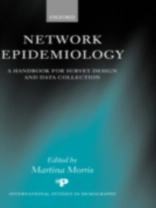Over the past two decades, the epidemic of HIV/AIDS has challenged the public health community to fundamentally rethink the framework for preventing infectious diseases. While much progress has been made on the biomedical front in treatments for HIV infection, prevention still relies on behaviour change. This book documents and explains the remarkable breakthroughs in behavioural research design that have emerged to confront this new challenge: the study ofpartnership networks. Traditionally, public health research focused on the "knowledge, attitudes, and practices (KAP)" of individuals, an approach designed for understanding health-related behaviour like seat-belt wearing and cigarette smoking. For HIV and other sexually transmitted infections, however, there are at least two people involved in transmission. This may not seem like a big difference, but in fact it changes everything. First, it means that your risk depends on your partners – and on their partners, and their partners: it depends on your position in the network of partnerships. Consider, for example, the rise of infections among monogamous women. Second, it means that individuals are not free to simply change their behaviour – condom use, or abstinence, needs to be negotiated with a partner. boththe epidemiology of risk and constraints to behaviour are therefore a function of the partnership network. And our ability to design effective prevention strategies depends on our ability to measure and summarize that network. Using the traditional research designs, you would not see this network at all – you would only see the unconnected nodes. They key to solving this problem lies in Network Analysis, before now a relatively obscure subfield in Sociology. For empirical studies of networks to become feasible, however, many problems had to be solved. This book documents the rapid progress that has been made. It brings together eight pioneering studies that have sought to map the networks that spread infection around the world. Each chapter reviews the questions that drove the study, the changes in methodology that were needed to implement the network survey, the mistakes and successes encountered, and the central findings that the network designmade possible. An introduction provides an overview of network survey design, a glossary provides a summary of network terminology, and example questionnaires from each study provide a template for further research. This is a unique and valuable resource for the international public health researchcommunity.
Martina Morris
Network Epidemiology [PDF ebook]
A Handbook for Survey Design and Data Collection
Network Epidemiology [PDF ebook]
A Handbook for Survey Design and Data Collection
Beli ebook ini dan dapatkan 1 lagi GRATIS!
Bahasa Inggris ● Format PDF ● ISBN 9780191533402 ● Editor Martina Morris ● Penerbit OUP Oxford ● Diterbitkan 2004 ● Diunduh 6 kali ● Mata uang EUR ● ID 2273411 ● Perlindungan salinan Adobe DRM
Membutuhkan pembaca ebook yang mampu DRM












